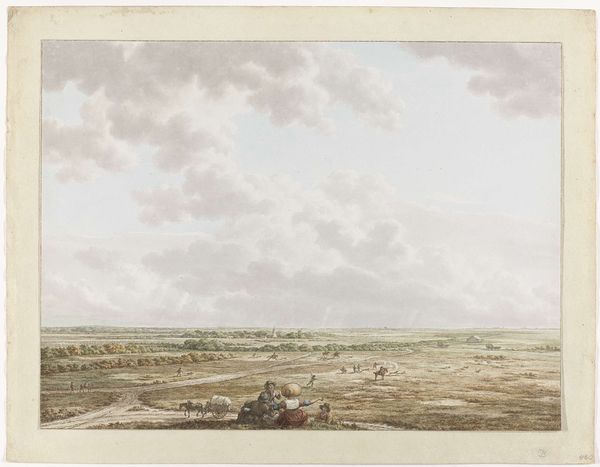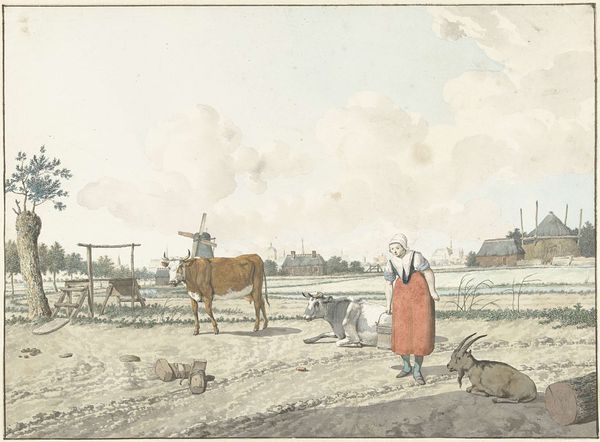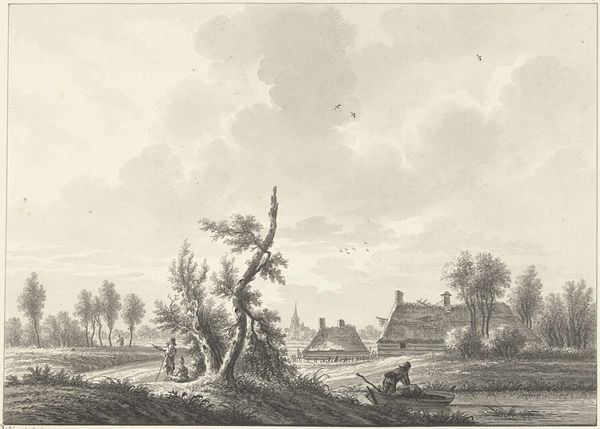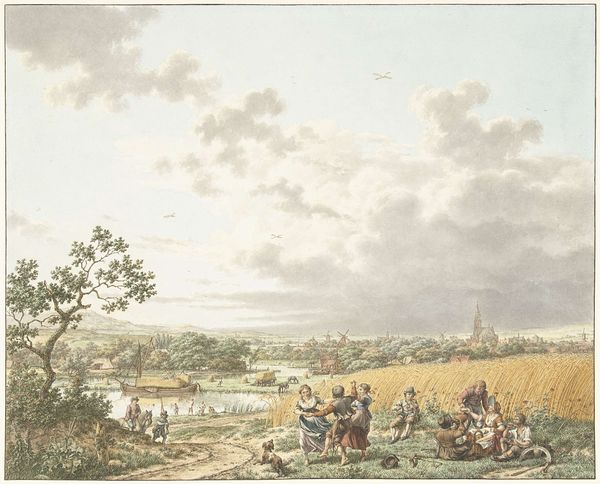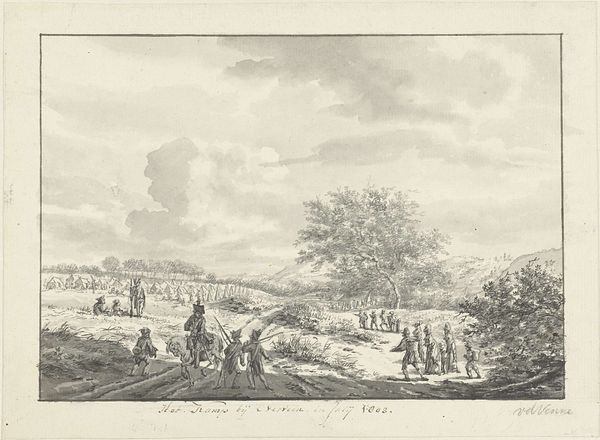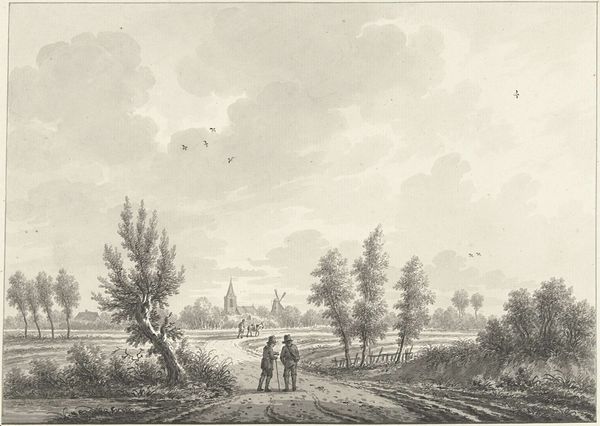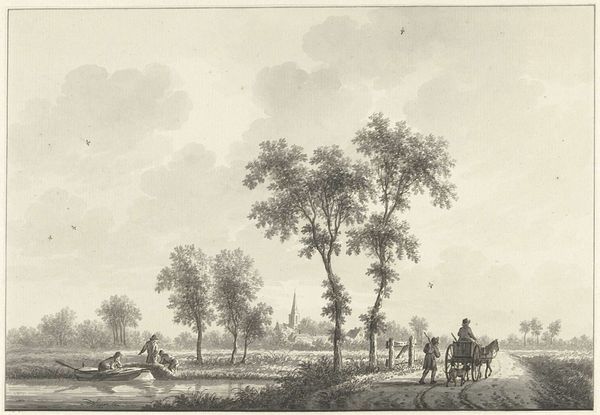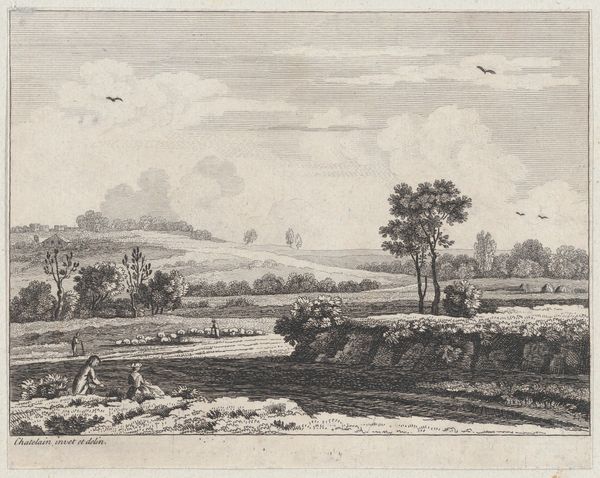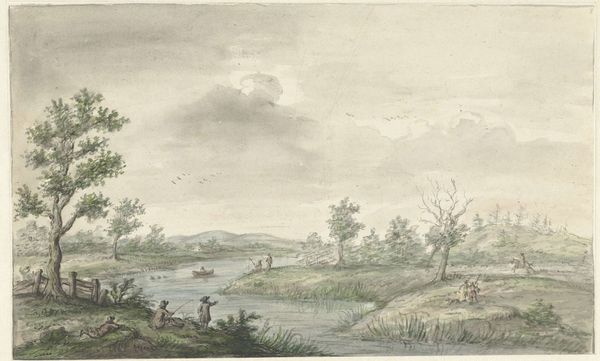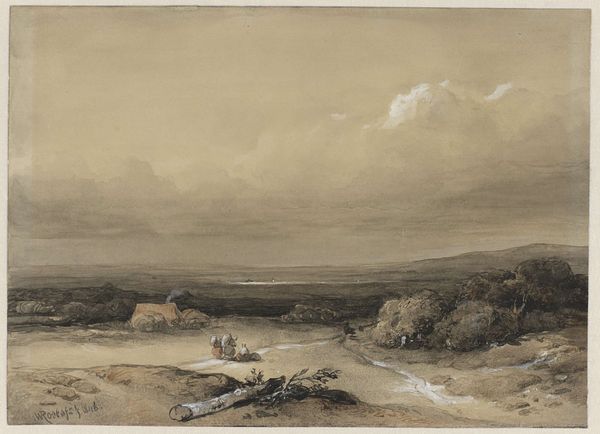
Gezicht van de Tafelberg bij Blaricum, met links Craayloos' Bosch en rechts de 'tafel' c. 1795
0:00
0:00
painting, plein-air, watercolor
#
painting
#
plein-air
#
landscape
#
watercolor
#
romanticism
#
watercolour illustration
#
genre-painting
#
watercolor
#
realism
Dimensions: height 426 mm, width 570 mm
Copyright: Rijks Museum: Open Domain
Curator: Ah, another gem from the Rijksmuseum! This is Jacob Cats's "Gezicht van de Tafelberg bij Blaricum, met links Craayloos' Bosch en rechts de 'tafel'," a watercolor painting from around 1795. Editor: It’s... remarkably tranquil. Like stepping into a muted dream. That soft wash of color creates such an airy lightness, the kind of scene you’d find yourself wandering into on a quiet afternoon. Curator: Indeed. What's striking is Cats's rendering of this landscape using watercolor. Its portability lent itself well to plein-air painting and thus we see this intimate connection to the labor that brought it forth. How the subtle use of watercolor affects our perception of rural labor. Editor: It makes you think about the relationship people had with the land. You get a sense of their connection, almost like the very texture of the earth is woven into the art. The figures dotted across the field; what's going on in their lives, their heads. You feel that they were rooted, in the earth itself. Curator: Absolutely. The artistic milieu in that historical moment certainly held expectations on artistic license. He must negotiate realism against romanticism. Did his access affect how he perceived the subjects who toil to keep him there? Editor: I do appreciate that it steers clear of being overly romantic, something that can kill an otherwise interesting composition! The slightly melancholic light balances the hopeful note it otherwise conveys. The slight elevation invites us into something private and serene. Curator: It is truly revealing how landscapes themselves are tied up with consumption. The “Table Mountain” was undoubtedly altered due to resources to keep this kind of bourgeois tourism going. A feedback loop if I ever saw one! Editor: Hmm, seeing through it that way…it feels as though we've peeled back a layer of quiet nostalgia to find something far more interesting lurking underneath! Curator: Precisely! We’ve untangled a new understanding together!
Comments
No comments
Be the first to comment and join the conversation on the ultimate creative platform.

